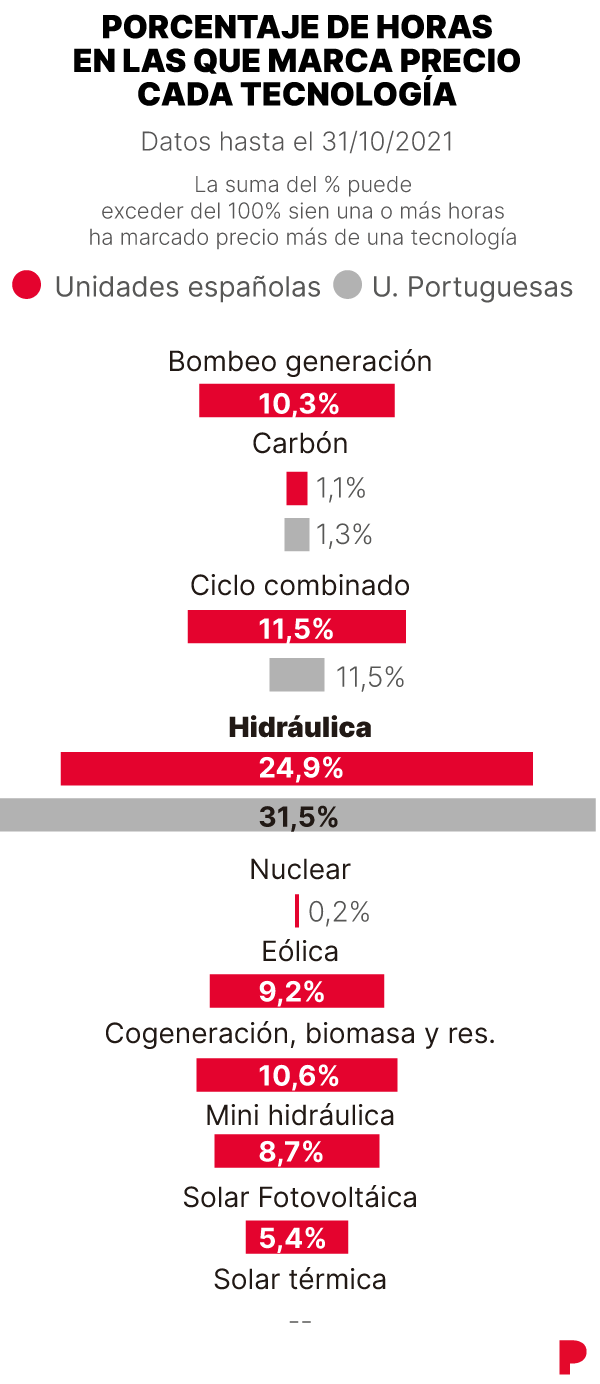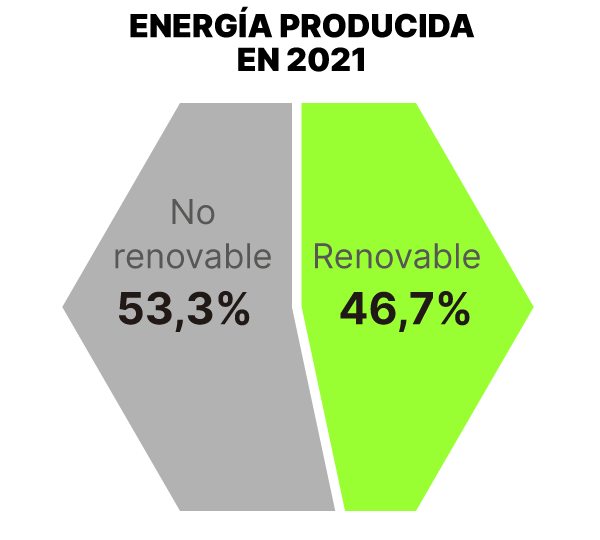-
Water sets the price 75% of the hours in Spain, but it does so at a price similar to that of combined cycle power plants that are more expensive due to the international price of natural gas
The Water was the technology that set the price of electricity for the most hours in 2021. Year, in which, in addition, the wind was the first generation fountain, for the second time in history since 2013, and the renewable they accounted for almost 47% of the total. But hydraulic energy, infected by combined cycles that burn natural gas, have led to 2021 being remembered as the year with the most expensive price in history (111.93 euros per megawatt-hour).
That is one of the paradoxes of Spanish electricity market which, like the European, is governed by a marginalist system pricing. Every day hourly auctions are held for the following day with the demand forecast from Red Eléctrica (REE). The latest technology that fits offer and demand it is the one that marks the price charged by the rest.
According to REE, the cheap windmills they led the production (23.3% of the total) in 2021, ahead of nuclear energy (21% of the total) and with an estimated increase of 10.5% over the previous year. Meanwhile, according to data up to the end of October from the Iberian Electricity Market Operator (OMIE), the hydraulics and pumping the last have entered the cassation and, therefore, 75.4% of the hours marked the price (the sum of the total hours that all the technologies have marked the price is 117.7% because in one or more hours more than one technology can mark the price) .

The price that takes as a reference the hydraulics is that of the combined cycles. Unlike other renewable technologies, such as wind or photovoltaic, and nuclear energy (the cheapest technologies in the generation mix), hydropower can manage your production and adapt to the market according to the most expensive generation source. After the coal exit, this means bidding at a price very similar to cycles combined that they burn natural gas. It is what is called as opportunity cost: what happens if the water does not enter the matching.
This does not happen when it rains a lot, then the reservoirs are filled and the power plants are forced to drain (they cannot store any more water), then the price drops to almost zero euros. An example is 2016, one of the cheapest years in history (39.67 euros) which was also a very rainy period.
A very expensive gas
This year the price of combined cycles has been especially high due to exogenous factors to the market: the shortage of Russian supply and high demand Asia has skyrocketed the price of natural gas in international markets. It has gone from 15 euros a year ago to 180 a week ago. The high price of this raw material coincides with a price of CO2 emission rights, which penalize the most polluting plants, in maximums (75-80 euros).

Both variables affect combined cycles (these plants burn natural gas and emit CO2), and these, in turn, infect hydraulic energy. If gas remains at these levels, it is difficult for electricity prices to fall, unless there is lots of wind and sun and demand is reduced, so that renewables manage to cover hourly needs together with nuclear. This happened on Monday, December 27, when the low demand for the Christmas holidays and wind energy, which marked the price for several hours, plummeted the price at dawn to 2.67 euros.
Interconnections
But not all the water that sets the price in Spain comes from national centrals, rather an important part, around half, comes through the interconnection with Portugal. Both countries share market in 90% of the hours (what is known as the Iberian market). The European objective is for this to occur in all countries so that there would be a convergence in prices and one country could ‘supply’ the other in particular cases of price increases.
But in the case of interconnection with France, the capacity of the tube that connects both countries is much lower, so the separation between markets reaches 70%.

Related news
Changes in the market
The Government has asked the European Comission, in charge of the design of the electricity market, change the pricing mechanism that harms the Spanish generation mix to avoid this contagion in prices. As defended by the Minister for the Ecological Transition, Teresa RiberaOn some occasions the marginalist system is only useful if all the energies move at similar costs, but not when there is a very large gap between very cheap forms of production and a small number of ways of producing electricity with very high prices.
Reference-www.elperiodico.com